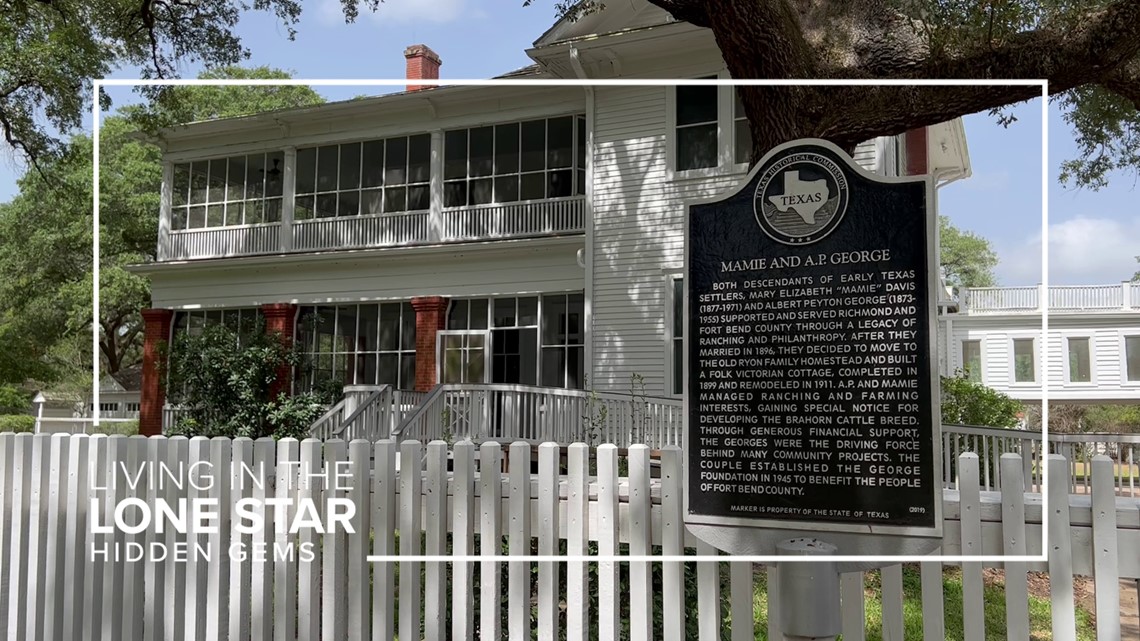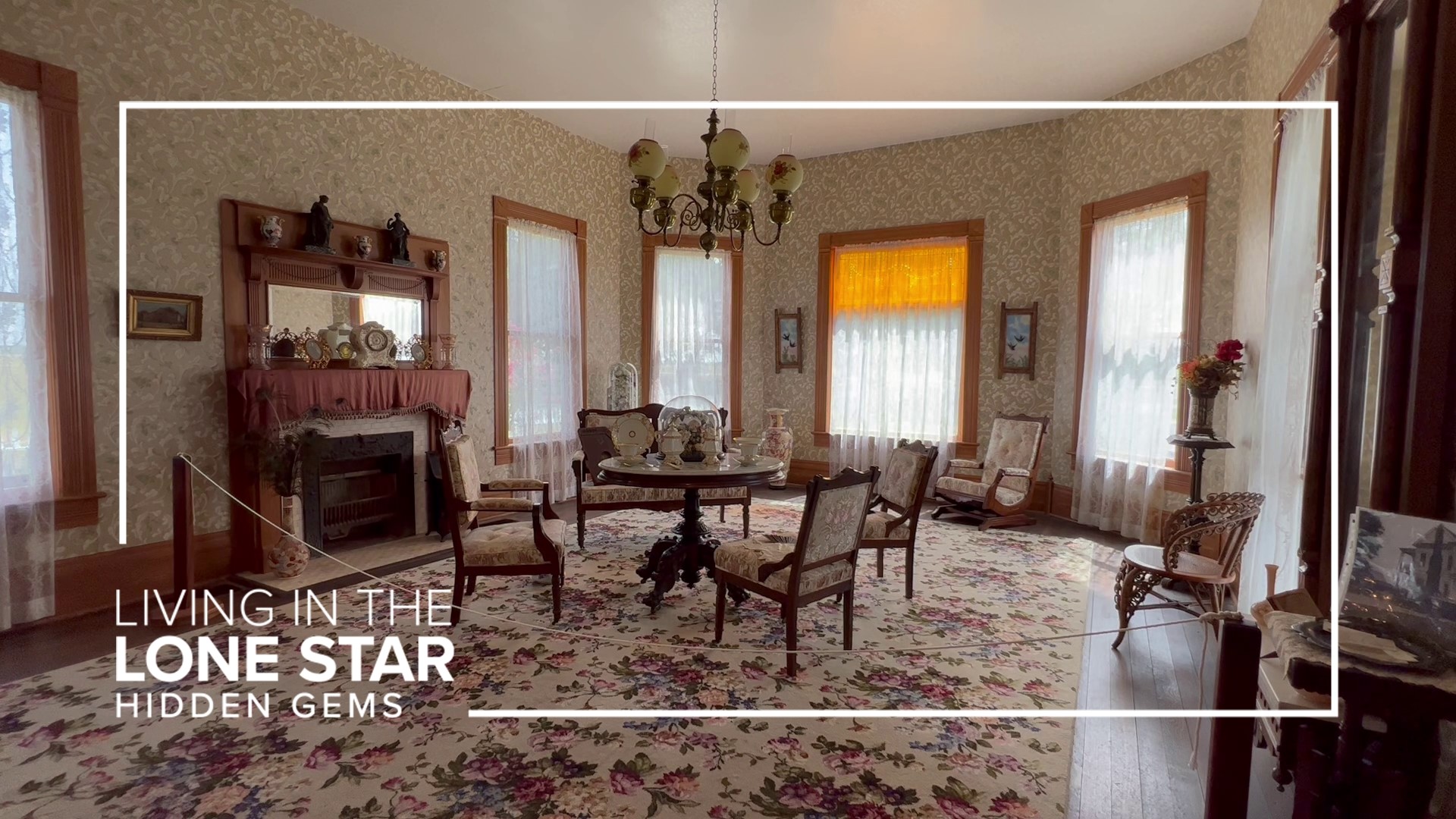HIDDEN GEM: George Ranch Historical Park
The story of early English-speaking settlers is told through four generations of a real Texas family by interpreters who interact with visitors.

If modern living is getting you, take a trip back in time at the George Ranch Historical Park in Richmond.
"Our mission is to teach students about Texas history really in about a 100-year timeframe from the 1830s to the 1930s," says site director Adrienne Barker.
The story is told through four generations of a real Texas family by interpreters who interact with visitors.
"They’re costumed to the timeframe, they’re at homes or in settings to what would have been in that timeframe, to really give people an experience about what it might have been like to live during that time," Barker explains.
Jones Stock Farm Texas life in the 1830s
The Jones Stock Farm is a demonstration of life in Southeast Texas in the 1830s.
"There, they will see what it was really like to be a pioneer: how they cooked, how they ate, how they slept, how they made their way in Texas," says Barker.
The dog-trot log cabin is like the one the Jones family lived in after their first cabin burned down. One room is set up as the kitchen, where food and cooking utensils can be found on the counters, shelves and walls around the fireplace. The opposite room is for sleeping and storage, all very rustic.
"(It's) probably the unique setting that people remember the most because it's the furthest from how we live right now," Barker says. "There, (visitors) will see what it was like to really be a pioneer."
RELATED: HIDDEN GEM: Smither Park
Ryon Prairie Home Texas life in the 1860s
Flash forward to the 1860s: in post-Civil War Texas, the Ryon Prairie home was built.
"There, you get a glimpse of the second generation of the family," says Barker.
A walk through the Greek Revival home reveals an elevated way of living compared to the log cabin.
"You see a little more progression in terms of how they lived, their lifestyle, the sorts of things people did," Barker says. "(The home has) a very nice kitchen and dining area. We still cook there in the stove."
Outbuildings here include gardens and a chicken coop. Nearby, you'll find the chuckwagon camp to learn about the golden age of the cattle drive.
"Polly Ryon was very involved in the cattle drive industry as well as farming," says Barker. "That was one of the successful things that the family did through all four generations: very their economic mix so that they focused on cattle and agriculture."
RELATED: HIDDEN GEM: Memorial Park history
Davis Victorian complex Texas life in the 1890s
The family’s third generation is highlighted at the Davis Victorian Complex, complete with a blacksmith shop.
"Most people find it very fascinating because they understand the concept of blacksmithing, but they’ve never seen it in action," Barker says.
The shop is staffed by an interpreter who actively works the forge, making pieces visitors can purchase in the gift shop.
A sharecropper's farm on the property showcases what was often an unfair way of life that was common in the late 1880s and 1890s among freed slaves and displaced soldiers.
You can also explore a cattle car, used to transport cattle by rail.
"To me, it's interesting for people to see that because they can understand the scope of a cattle car," says Barker.
The Davis mansion, though, is really the showpiece of this site.
"It's a very good demonstration of the Victorian-style home, decorations and lifestyle," Barker says.
George Home and Cattle Complex Texas life in the 1930s
In the 1930s, what started as a modest homestead had evolved into a ranch house and cattle complex. The location of the house has a lot of significance for the family because it’s the site where two other homes were previously built.
"It holds kind of a special place in our heart because it was the place where these families lived through the generations," Barker says.
To highlight the family's cattle business, George Ranch Historical Park features a cowboy show for visitors.
"It’s not like being at the Houston Livestock Show and Rodeo," says Barker. "You’re not way far away."
Visitors get an up-close look at the cowboys as they demonstrating sorting and roping cattle.
"Then we have the fun of running the cattle through the dipping vat," Barker shares. "I’m not going to tell much about that because people need to come and see it.


How to visit The public is welcome on Saturdays
The George Ranch Historical Park is open for pre-booked school and group tours during the week.
On Saturdays, it's open to the public from 9 a.m. to 5 p.m. Admission is $15 for adults, $12 for seniors and $10 for children.
If you're planning a visit, you're encouraged to block out at least three to four hours to make it to all four sites.
For more information about visiting the park, click here.



